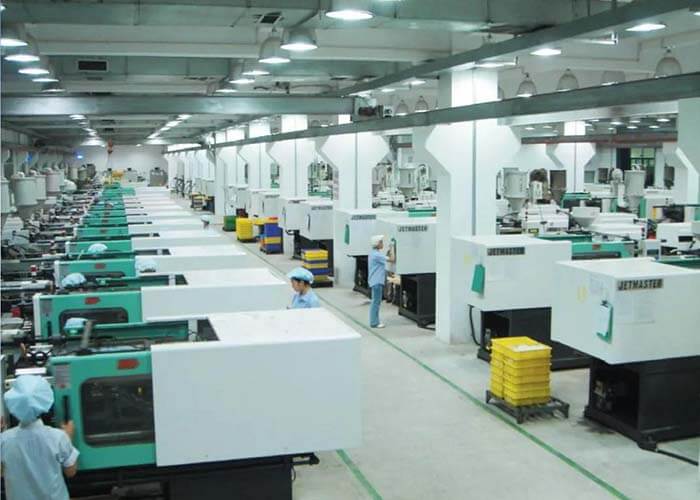Here are the 9 factors affect the mold cooling rate of products in injection molding.
1. Plastic product design aspects affect the mold cooling rate
The main one is the wall thickness of the plastic product. The greater the thickness of the product, the longer the cooling time. In general, the cooling time is approximately proportional to the square of the thickness of the plastic product, or 1.6 times the maximum runner diameter. This means that doubling the thickness of the plastic product increases the cooling time by a factor of 4.
2. Mold materials and their mold cooling methods
Mould material, including mold core, cavity material, and mold frame material, has a great influence on mold cooling rate. The higher the thermal conductivity of the mold material, the better the heat transfer from the plastic per unit time, and the shorter the mold cooling time.
3. Mold cooling water pipe configuration affects the mold cooling rate
The closer the mold cooling water pipe is to the mold cavity, the larger the diameter of the pipe, and the greater the number, the better the mold cooling effect and the shorter the mold cooling time.
4. Coolant flow rate affects the mold cooling rate
The greater the flow of mold cooling water (generally to achieve turbulent flow is better), the better the effect of mold cooling water to take away heat in the form of thermal convection.
5. The nature of the coolant affects the mold cooling rate
The viscosity and heat transfer coefficient of the coolant will also affect the heat transfer effect of the mold. The lower the viscosity of the coolant, the higher the heat transfer coefficient, and the lower the temperature, the better the cooling effect.
6. Plastic selection affects the mold cooling rate
Plastic is a measure of how quickly the plastic conducts heat from a hot to a cold area. The higher the thermal conductivity of the plastic, the better the thermal conductivity, or the lower the specific heat of the plastic, the easier the temperature change, so the heat can easily escape, the better the thermal conductivity, and the shorter the cooling time required.
7. Processing parameters setting affect the mold cooling rate
The higher the material temperature, the higher the injection mold temperature, and the lower the ejection mold temperature, the longer the mold cooling time required.
8. Design rules for mold cooling systems
The mold cooling channels should be designed to ensure uniform and rapid cooling.
The mold cooling system should be designed to maintain proper and efficient cooling of the mold. Cooling holes should be of standard size to facilitate machining and assembly.
9. Mold cooling system design parameters affect the mold cooling rate
When designing a mold cooling system, the mold designer must determine the following design parameters based on the wall thickness and volume of the molded part
The location and size of the mold cooling holes, the length of the holes, the type of holes, the configuration and connection of the holes, and the flow rate and heat transfer properties of the coolant.
Besides the 9 Factors Affect The Mold Cooling Rate article, you may also be interested in the below articles.
Summary Of 50 Injection Mold Structure Operation Dynamic Diagrams
Auto Parts Stamping Die Design Concept




